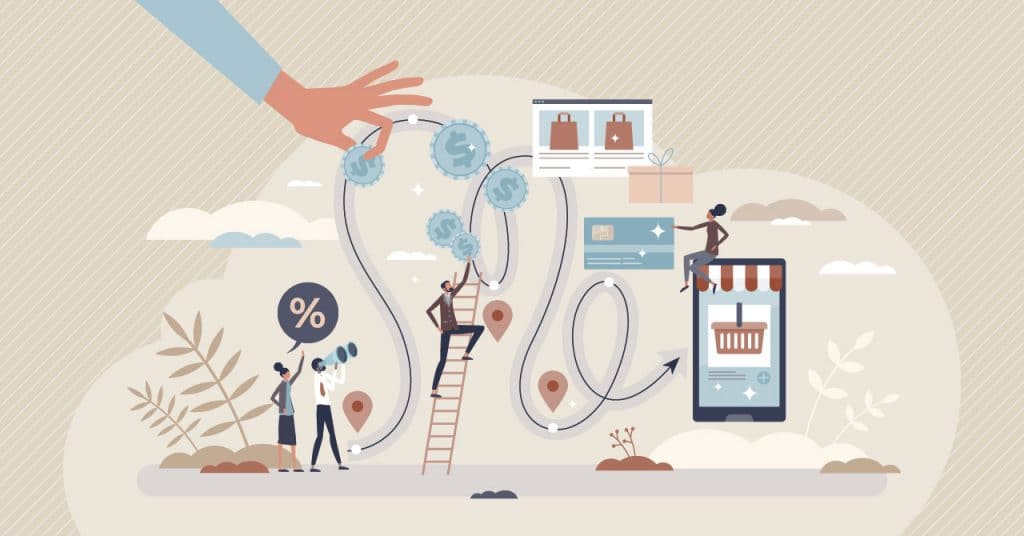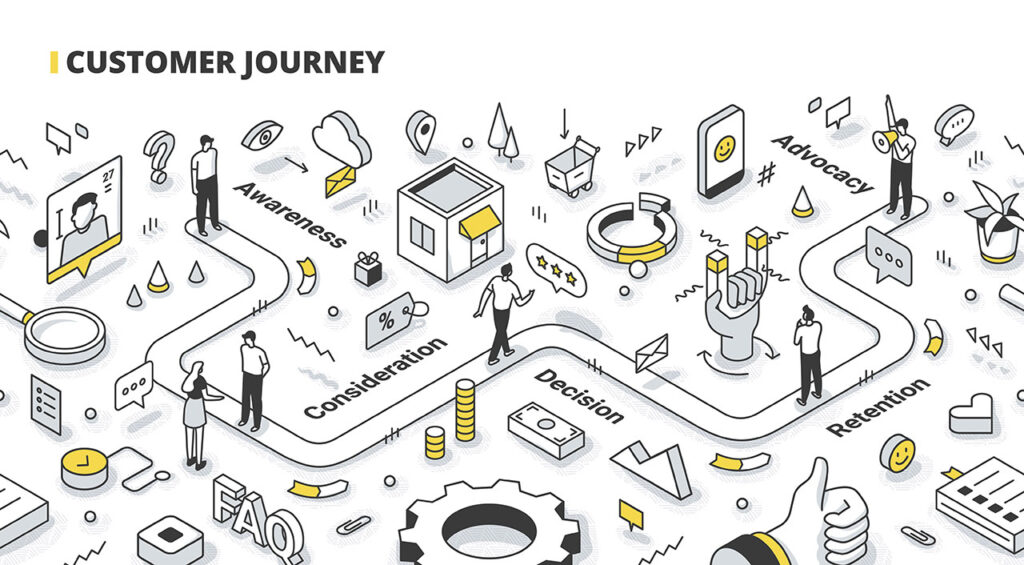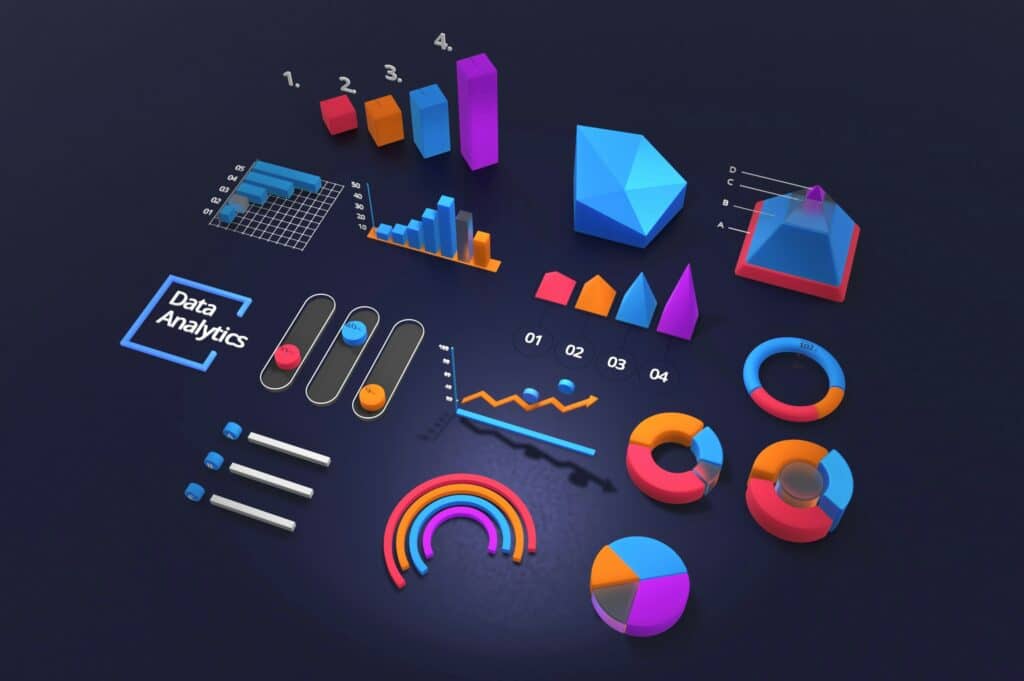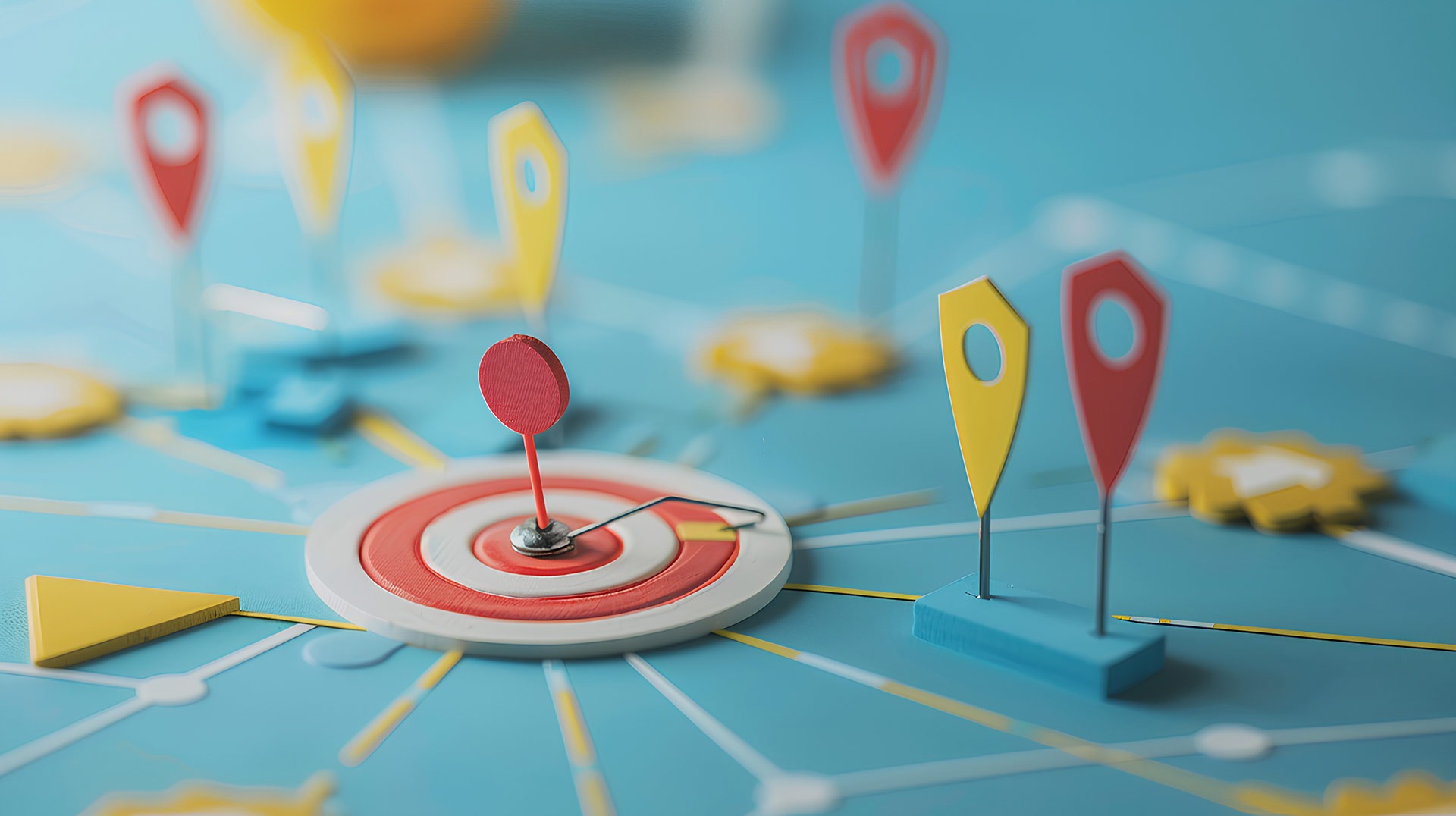What is the B2B buyer journey?
The B2B buyer journey is the process that a company or decision-maker goes through before making a purchase decision.
It consists of several phases in which the information needs and decision-making mechanisms vary greatly.

A typical buyer journey includes:
- Awareness
The potential customer recognizes a problem or a need. In this phase, they tend to look for general information and possible solutions—not specific products or providers. - Consideration
The problem is defined, and the focus is now on possible solutions. The buyer begins to compare providers, products, or services. Content such as white papers, case studies, or webinars are particularly helpful at this stage. - Decision
Now it gets specific: the buyer has created a shortlist and is comparing prices, services, and customer service. They check references and may ask for a demo or a customized quote.
Methods for optimizing the B2B buyer journey
Optimizing the buyer journey is crucial for qualifying leads more efficiently, strengthening customer relationships, and increasing conversion rates.
Here are some proven methods for optimization:
Method 1: Content mapping along the journey
Create targeted content for each phase: e.g., blog articles and infographics for the awareness phase, case studies and comparisons for the consideration phase, and product demos and testimonials for the decision phase.

Method 2: Develop personas
Define buyer personas to better understand the needs, decision-making processes, and pain points of your target group—and tailor your communication accordingly.
Method 3: Conduct surveys and gather feedback
Direct feedback from (potential) customers is invaluable.
By conducting short surveys after initial contact, during a sales process, or after closing a deal, you can gain valuable insights:
- What information was missing?
- What was helpful?
- Where were the hurdles?
These insights help to continuously improve the journey and align it with real user needs.
Method 4: Marketing automation and lead nurturing
Automated email campaigns tailored to the behavior and stage of the lead help to guide prospects through the journey in a targeted manner.
Method 5: Sales and marketing alignment (Smarketing)
Close cooperation between marketing and sales ensures consistent communication and smooth lead handling—especially in the transition phase between consideration and decision.
Method 6: Tracking and analytics
Use tools such as Google Analytics, HubSpot, or CRM systems to analyze user behavior and identify and eliminate bottlenecks in the journey.

Method 7: Personalization
Customize content, emails, and landing pages—e.g., through dynamic content or segmented campaigns — to increase relevance and engagement.
The specifics of the B2B purchasing process
In contrast to the B2C purchasing process, the B2B buyer journey is often:
- More protracted – decisions take weeks or months.
- Multi-stage – often several decision-makers are involved (e.g., technology, purchasing, management).
- More rational – decisions are based on benefits, efficiency, and ROI.
- Content-driven – technically sound content plays a central role.
For marketers, this means that content and measures must be tailored to the respective phase and the roles involved.
Strategies such as account-based marketing (ABM), marketing automation, and lead nurturing help to expand contact in a targeted manner.
Conclusion
The B2B buyer journey is not a linear path, but rather a complex decision-making process that requires deep understanding, empathy, and strategic communication.
Through targeted optimization—such as content mapping, automation, and data-based tracking—companies can actively shape and accelerate this process.
Those who manage to reach potential customers with the right information at the right time and serve their needs along the journey build trust and clearly stand out from the competition.



